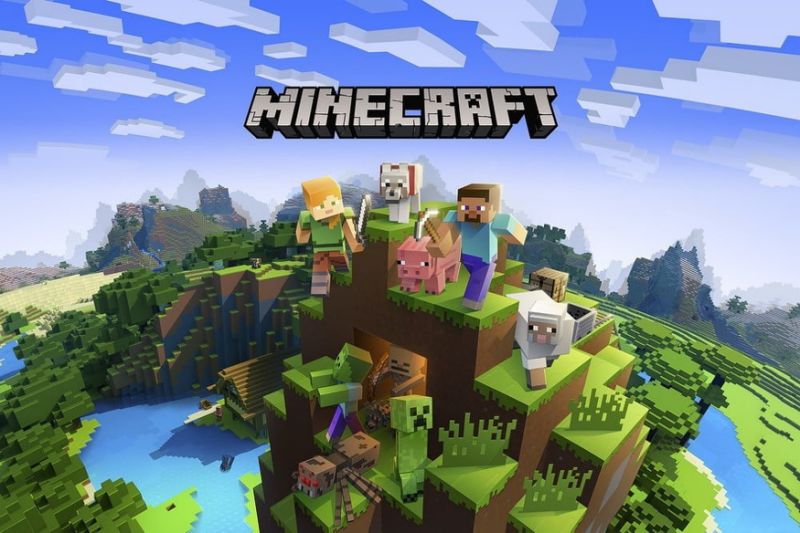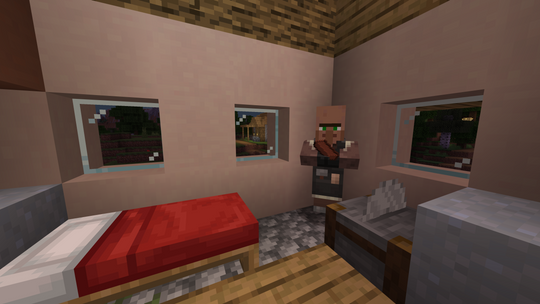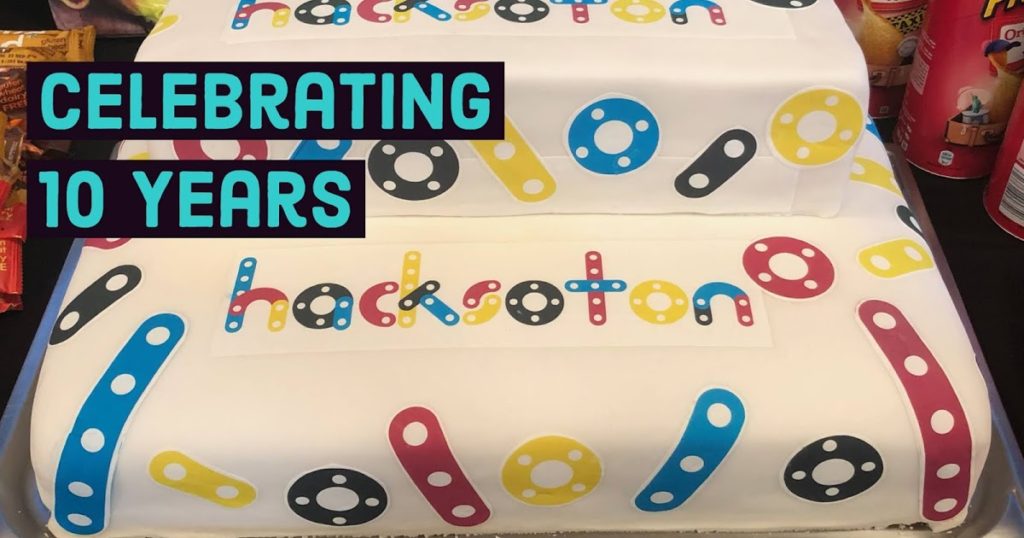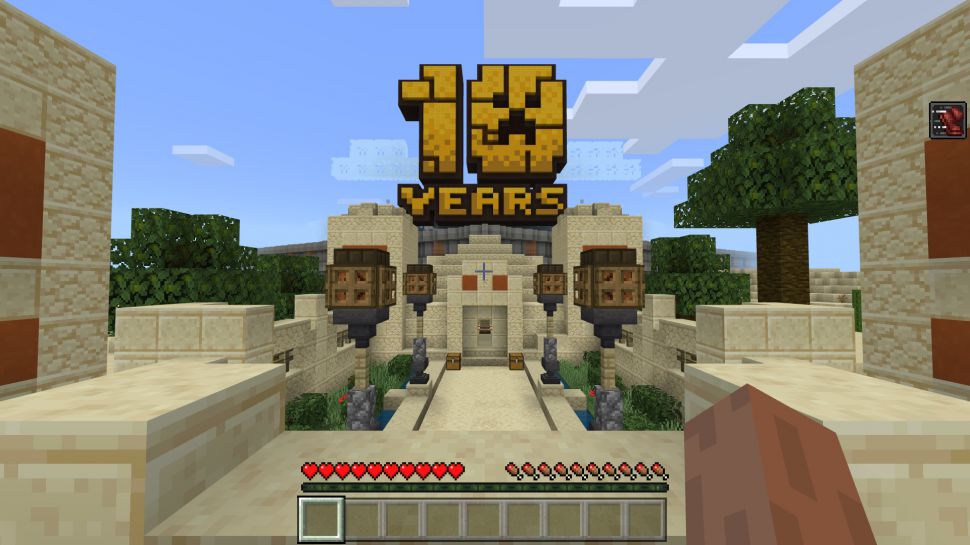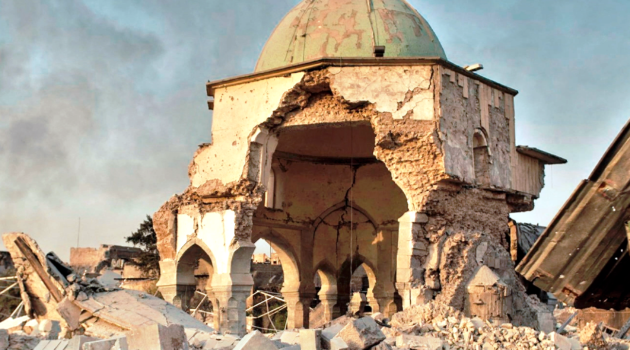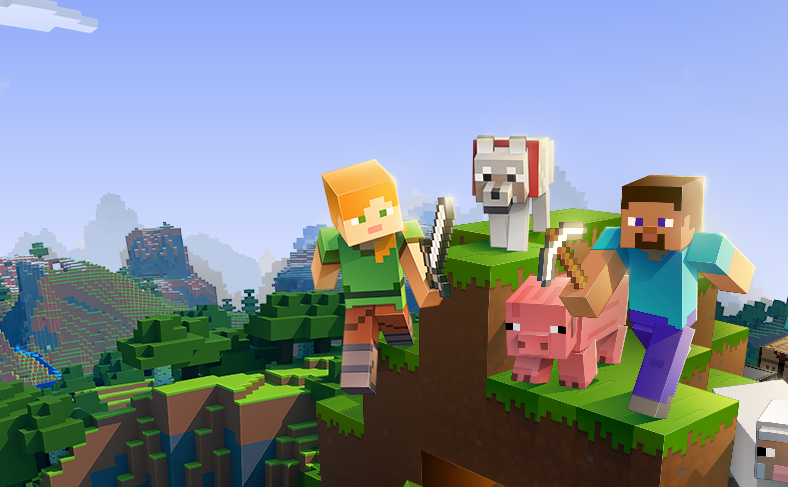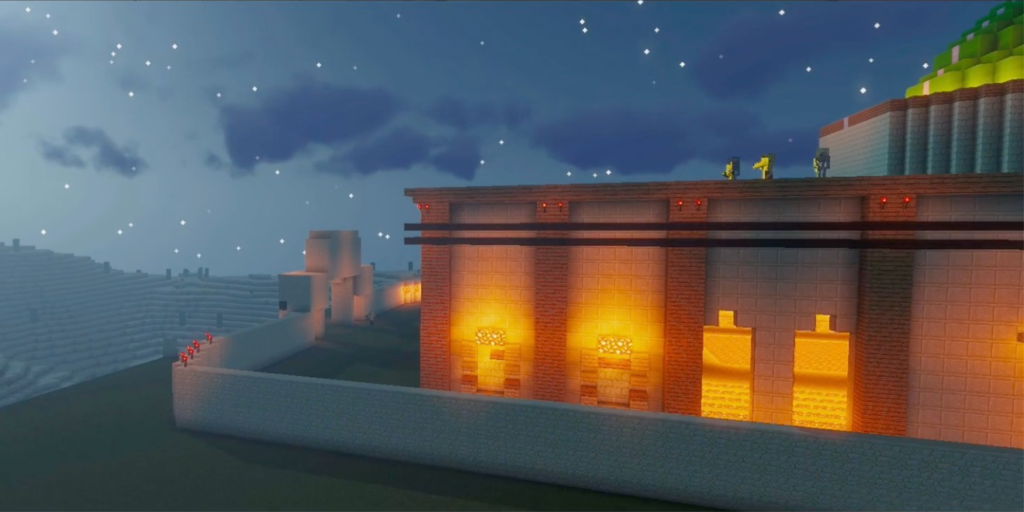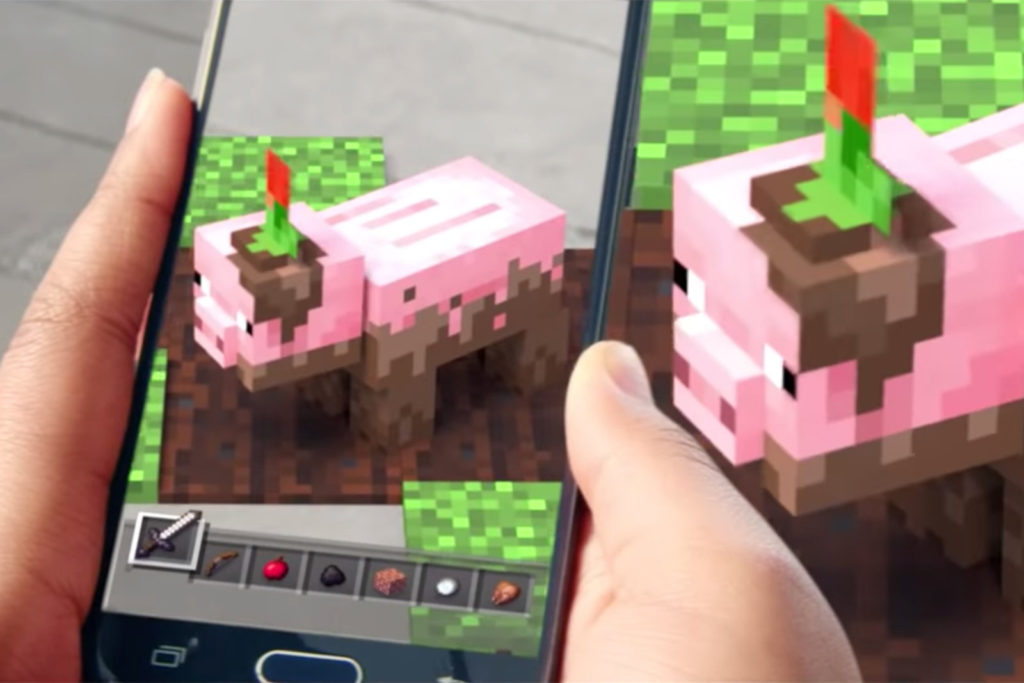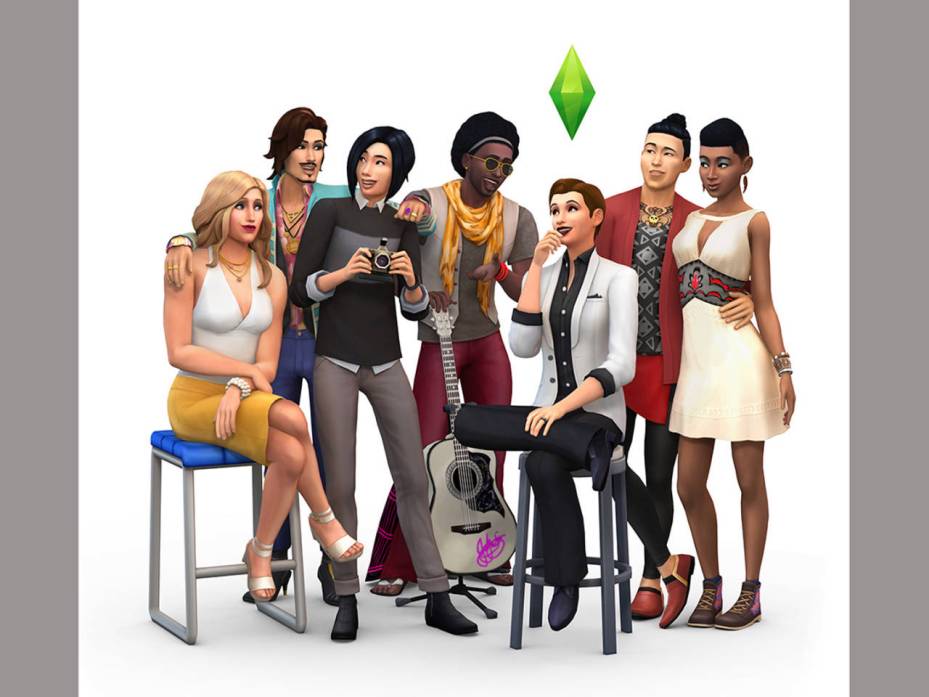Minecraft may be best-selling video game in history with 176 million copies sold
Minecraft, which launched 10 years ago for the PC, has sold more than 176 million copies, which possibly makes it the best-selling video game of all time.
Microsoft announced the milestone in an Xbox Wire post that celebrates Minecraft‘s 10th birthday. Despite being around for a decade, the game’s popularity remains strong, helped by its presence in practically all video game platforms available.
At more than 176 million copies sold, Minecraft may be the best-selling video game of all time. Tetris is considered its closest rival, but it is difficult to compare the two games due to the different versions of the block-matching puzzler.
According to Windows Central, past iterations of Tetris, not including the free-to-play versions, have sold 70 million copies, which was reported in 2009. Electronic Arts then said that the mobile version reached 100 million copies sold in 2010, before adopting a free-to-play model. There may be some overlap, but even if the two figures are combined, they will come up short to Minecraft‘s reported copies sold.
There are estimates that suggest Tetris has been downloaded more than 500 million times, but with the different spin-offs, it is hard to keep track and make a direct comparison with Minecraft. The better comparison would be the also still wildly popular Grand Theft Auto V, which has sold about 110 million copies after launching in 2013.
In celebration of the milestone, Microsoft also announced Minecraft Earth, a free-to-play augmented reality game for mobile phones that looks to bring the game’s mechanics into the real world. It looks to better utilize AR technology compared to Pokémon Go, while staying true to the world-building experience with the same Bedrock engine used in all other versions of the game.
Minecraft Earth will feature microtransactions, but details on that remain scarce. The developers claim that it will not be a pay-to-win game, but that is also unclear because there will be no player vs. player mode in the mobile game.
The closed beta for Minecraft Earth will launch this summer on both iOS and Android. Microsoft seemingly has more in store for Minecraft‘s 10th birthday though, so fans of the franchise should stay tuned.
Latest ‘Minecraft’ update means new blocks, better villages, and pillagers with crossbows
“Minecraft” may be one of the best-selling video games of all time – with more than 154 million copies purchased to date – but the developers haven’t stopped building more into the game.
Acquired by Microsoft in 2014, developer Mojang has just launched Village & Pillage, a free update that adds a plethora of new goodies to “Minecraft,” for both the Java and Bedrock versions of game, which includes Windows PC ($26.95 and $26.99 for PC and Macintosh), mobile (iOS and Android, $6.99), Xbox One ($19.99) and Nintendo Switch ($29.99), and virtual reality platforms.
Before we get into what’s new and newsworthy in this new update, take in these additional facts about the world-renowned building simulation, released ten years ago this month: more people are playing “Minecraft” than ever before at about 91 million unique players every month (across all platforms); more than 160 million people have watched more than 5 billion hours of Minecraft video content on YouTube; and not only is “Minecraft” one of the best-selling games in history, but also one of the highest-rated, with the PC version netting a 93% average “metascore” at Metacritic.com.
Building better ‘Minecraft’ villages
As the name suggests, villages have changed quite a bit and are among the highlights in this latest ‘Minecraft’ update.
Visually, villages will look different based on biome, or region – plains, desert, savannah, taiga, and so forth – therefore you can expect to see changes based on climate and local resources. In fact, villages are now generated differently, so the layout and architecture of the village will vary.
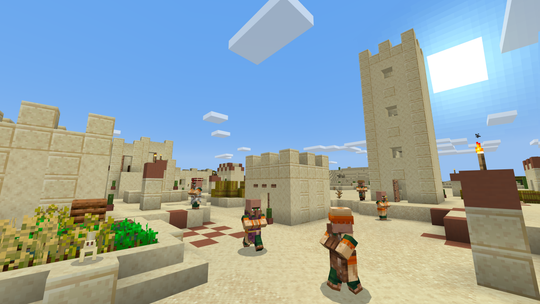
Villages are generated differently now in ‘Minecraft,’ and enjoy a new look and gameplay elements tied to each biome, or region. (Photo: Mojang/Microsoft)
Along with new building types, villagers also look more unique, with clothing that matches the biome they’re in, as well as their level and profession. With the latter, villagers now learn a trade when near a job site block, such as a Blacksmith, Librarian, Butcher, Cartographer and Shepherd, to name a few.
Villagers go about their business with a specific routine – from bed to work to socializing with others – and with better “pathfinding” artificial intelligence, too.
There are other additions, too, such as Masons and Nitwit villagers, kids who play tag, and more.
Prepare to fend off Pillagers
Want to pick a fight? Even if you don’t, you might be forced to defend yourself from an angry mob in the “Minecraft” Village & Pillage update.
While not too bright, the crossbow-wielding pillagers will disrupt the villagers’ daily lives, by attacking them in small groups, at fortified outposts, and will plunder indiscriminately throughout the land. Unlike skeletons, these pillagers may not be smart enough to move out of the way of your return fire; their aim isn’t the best; and they’ll often hurt each other with friendly fire (and say “Ow!”).
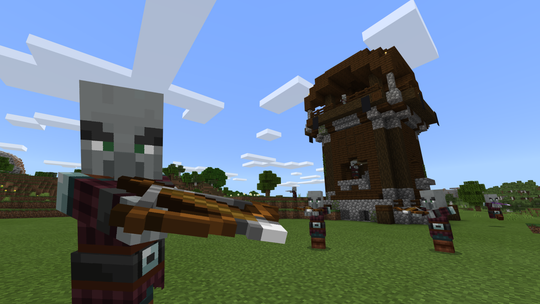
What’s better than a bow? A crossbow, of course. This is the main new weapon found in the ‘Village & Pillage’ update for ‘Minecraft.’ (Photo: Mojang/Microsoft)
But what they lack in brains they make up for in tenacity. Pillagers will respawn in large outpost towers and swarm and destroy villagers in their path. So, keep a shield handy to minimize damage from an onslaught of arrows.
Once you clear them out, you can score some loot. Players who successfully defend a village from a raid will receive some fireworks and the Hero of the Village effect, which provides a deep discount on trades with villagers (see below). And if you take out a pillager captain – the ones with the banners on their backs – you’ll be rewarded with a triggered raid when you enter a village.
Along with pillagers, there are other new mobs in this update, including chubby pandas, stray cats, Ravagers (a powerful new mob), and some other surprises.
Trading up in the ‘Minecraft’ update
As previously mentioned, there are new occupations in each village you visit, and that means new opportunities for trading.
When villagers make trades, they gain experience. Gain enough experience and they level up. Leveling up unlocks new trades. You get the idea.
Villagers now have a new visual-based trading system and will hold up an item they wish to trade if the player is holding something they want.
Also new is Wandering Traders, which are mysterious salesmen – flanked by a llama on each side of him – who deal items from several different biomes, often with rare materials, and offering up to six randomly generated trades. These special characters stay alive at night by drinking invisibility potions. And their loyal llamas spit at mobs if approached.
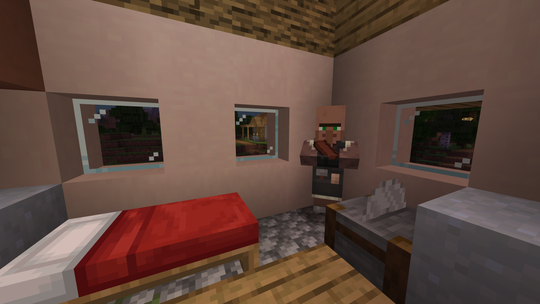
The latest ‘Minecraft’ update adds several new professionals to the game, including cartographer, librarian, butcher, and, shown here, the stone mason. (Photo: Mojang/Microsoft)
Bamboo, berries and bells
There are dozens of other new features (and fixes) in the Village & Pillage update. Here are a few more worthy features:
•Like bamboo? Then you’ll love the update as there’s plenty of it in two new biomes: bamboo jungle and bamboo jungle hills. You can not only chop it down easily by hitting it with a sword, but also combine it with string to make scaffolding in building structures.
•Several new blocks now pop up, including a variety of slabs, stairs, and walls. New textures have been added to blocks, too, such as stained glass. And there are new job site blocks that assign trades to jobless villagers.
•As you might expect, crossbows offer many benefits over a regular bow: the weapon enjoys higher damage (and can pierce multiple enemies), plus it reloads faster, and can also shoot fireworks.
•Other additions include a bell you can ring to warn villagers of an impending attack or danger – so they run inside and hide; campfires, which serve as a light source or to cook meat; Sweet Berries, a new source of food found in taiga biomes; seven new Achievements including one for killing a pillager captain; and some accessibility features such as text to speech, which can now be enabled to read in-game chat.
Minecraft Players Are Celebrating 10 Years With Cakes, Artwork And More
Minecraft turns 10 this weekend and fans of the popular-blocky-game are celebrating this big milestone in various ways, like baking cakes in real life or sharing old stories and screenshots.
Last weekend, Minecraft developer Mojang released a new and free map to celebrate the big milestone. However, while that map was cool, it was also a bit early. This weekend (specifcally May 16th) is actually the official 10 year anniversary of the first release of Minecraft.Outstream Video
00:0000:00

In game, players discovered that when baking a cake on the special day, they found a big white “10″ stuck on top of it. A small detail from Mojang honoring the big day.
Beyond this small cake topping, fans across Reddit and Twitter have been sharing tons of videos, photos, builds and more in honor of a decade of Minecraft.
One fan shared a handwritten letter they received from Jeb, a lead developer on the game, from nearly 10 years ago. When he sent his letter and received a response, he was 9 years old and in 5th grade.

A Minecraft player and creator shared some new skins they made in honor of the celebrations. It shows the main default characters of Minecraft holding up cakes. The cake is actually the head and the shoulder is the top of the hands. A very clever design.

Another player showed off artwork they made celebrating the game’s 10-year anniversary.

Reddit user and Minecraft fan Muddy_Boy shared this amazing piece of art he created in-game. Each letter represents a major update the game received over the past 10 years.Reddit user Knight506 did something similar, but showed each up visually in a video.

A few players across Reddit and elsewhere shared images of some of their first builds or even their very first homes. Like Ryan-1- on the Minecraft subreddit, who shared a screenshot of their first dirt house.

This screenshot reminded me of my first dirt home.
I downloaded Minecraft and watched a short tutorial on how to play the game and jumped in. This was right near the release of the game and I scared of the night. The moment the sun started to slide down the sky, I panicked and dug out some dirt and made a small crappy home like this. After a few days of playing that first world, my small home was a castle. But in the middle of it all, was still my first home and chest.
JotaGHz shared a photo of their birthday cake, which is Minecraft themed as the player shares a birthday with the game.

Another player also shares a birthday with Minecraft and shared their cake on the Minecraft subreddit too.

If you want to see and read more memories of Minecraft from players all around the world you can check out the hashtag #MinecraftMemories on Twitter where players have been sharing stories and photos for the past week. The official Minecraft website rounded up some of their favorite tweets in a post.
What memories of Minecraft do you have? Do you remember the first time you built a home? The first time you joined a random server? The first skin you used? Share your memories and stories in the comments.
Minecraft’s anniversary map is a huge interactive museum
The first version of Minecraft appeared 10 years ago this Friday, which is a truly terrifying thought. Microsoft and Mojang are marking the occasion with, among other things, a fancy new map that’s free for all players to download. It’s a theme park and museum, put together by the builders at BlockWorks to take you on a trip through the game’s history.
Walking through static exhibits wouldn’t be very Minecraft, so this museum is interactive, complete with rides, puzzles and Easter eggs. It’s also absolutely huge. There are buildings dedicated to displaying every block and creature in the game, gargantuan architectural wonders, giant circuit boards, biodomes and a minecart ride through a decade of milestones. There’s a lot to see.
Mojang has teased some Easter eggs, though I confess I haven’t been looking too hard. I’ve just been wandering around aimlessly, nodding thoughtfully at pretty exhibits and snapping away.
I haven’t played in years, but after popping in for a nostalgic saunter, I’ve found myself eager to stay. I’ve missed a lot of updates, but a quick browse on Reddit revealed plenty of impressive creations and sources of inspiration. I spent a whole year building a retro sci-fi ‘City of Tomorrow’ once and I’ve got the itch again.

A pair of big announcements are also coming on May 17, but all we know about them is that they’ll be better than huggable Creepers. What could possible be better than that?
You can download the map for Java here and for Bedrock on the Minecraft Marketplace. There’s also an anniversary sale going on in the shop, reducing the base game by 50 percent and the top ten items by 10 percent. Minecraft merchandise has been discounted, too.
Play an early version of Minecraft in your browser
Microsoft celebrates 10 years of Minecraft by making one of the earliest functional versions available to play online in the form of classic.minecraft.net.
Ten years of creating, exploring and surviving. Ten years of mobs, mods and magnificent creations. Ten years of being consistently amazed by what you’ve built with our game. Ten years of you digging straight down despite our warnings. Ten years of being endlessly excited to see what you come up with next.
In effect, it’s a simple but functional version of creative mode, and you can’t save your creations.
Microsoft teams up with UNESCO and kids to revive lost monuments with Minecraft
Can a video game reclaim centuries’ worth of lost cultural heritage in the Middle East? Microsoft’s Minecraft Education Edition is being used to do just that, in league with UNESCO and schools around the world.
History Blocks takes advantage of the educationally oriented Minecraft platform to build virtual versions of ancient monuments — starting with sites that were destroyed by the Islamic State group in Syria and Iraq, and by the Taliban in Afghanistan.
The project was conceived and developed by Agencia Africa in Brazil, and put to its first test this February at Escola Bosque, a private school in São Paulo.
“It is surprising to see the level of the students’ engagement in the History Blocks project,” Escola Bosque’s pedagogical director, Silvia Scuracchio, said today in a news release. “At the same time that they solve complex geometry, logic and abstract challenges, it’s possible to see how they get involved with the culture and history behind the monuments and their destruction. For many of them, it was their first contact with concepts such as cultural destruction and ideology oppression.”
Students aged from 9 to 13 built up their models from historical images of the Temple of Bel, the Monastery of St. Elian and the entrance to the ancient city of Aleppo in Syria, as well as the Mausoleum of Imam Awn al-Din and the Al-Nuri Mosque in Iraq, and Afghanistan’s Bamiyan Buddhas.
Since February, the History Blocks project has been picked up by schools in more than 30 countries using the Minecraft Education Edition.
“Technology is a tool to transform education and bring to life methods that used to be unthinkable when it comes to teaching,” said Daniel Maia, manager for academic projects at Microsoft Brazil. “The project on UNESCO’s world heritage sites opens the door for students all over the world to study important monuments of our history.”
Minecraft and History Blocks are great teaching tools, but if you’re looking for high-fidelity models of heritage hotspots ranging from ancient Egyptian temples to Paris’ Notre Dame Cathedral, they’re covered by other software and survey programs.
The International Council on Monuments and Sites, a U.N. advisory panel also known as ICOMOS, is one of the leaders in the effort to document cultural sites. Over the past few years, ICOMOS’ Project Anqa (from the Arabic word for “phoenix”) has been conducting surveys of sites in Syria, starting with six representative buildings in Damascus. You can check out the virtual 3-D models online.
A historical conservation initiative called CyArk is playing a key role in 3-D documentation, for Project Anqa as well as dozens of other survey projects around the world. CyArk’s detailed digital scans feed into Google Arts and Sciences’ Open Heritage Project. For a powerful demonstration of the technology, check out CyArk’s scan of Mount Rushmore National Memorial in South Dakota. (But make sure your computer is powerful enough for the task.)
Could virtual models provide enough information to rebuild lost monuments? Historians and architects certainly hope so: They’re banking on surveys of Notre Dame, including a monumental 3-D laser scan and photogrammetric surveyconducted several years ago under the leadership of the late art historian Andrew Tallon, to serve as a guide for the reconstruction ahead.
‘Minecraft’ Creator Excluded From Anniversary Due to ‘Comments and Opinions’ (EXCLUSIVE)
“Minecraft” creator Marcus “Notch” Persson, who sold the title to Microsoft for $2.5 billion in 2014, won’t be part of 10-year anniversary plans for the game because of his “comments and opinions,” Microsoft tells Variety.
“His comments and opinions do not reflect those of Microsoft or Mojang and are not representative of ‘Minecraft,” a Microsoft spokesperson told Variety.
The spokesperson also noted that Persson hasn’t been involved with “Minecraft” since he sold the studio and rights to the game in 2014.
Persson, once an involved member of the video game development community, has increasingly ostracized himself with his Twitter comments, including transphobic statements and comments about a “heterosexual pride day,” and that “it’s ok to be white.” Persson has about 3.7 million followers on Twitter.
An update to the game last month removed loading screen text on “Minecraft” that referenced Persson. Microsoft didn’t comment about the decision to remove the reference last month.
But speaking with Variety this week, a Microsoft official confirmed that Persson would not take part in a press event at Minecraft studio Mojang in Stockholm to celebrate the May 17. The event will look at the “past, present and exciting future of the decade-old franchise,” according to the company.
“Minecraft” is a seminal video game. With more than 91 million monthly players, the building and survival game is the second best-selling video game in history, behind “Tetris.”
“Minecraft” is available on all gaming platforms.
This Minecraft Program Helps Students ‘Rebuild’ Heritage Sites Destroyed by Conflict
The Buddhas of Bamyan were two monumental statues carved into the side of a cliff in Bamyan Valley, central Afghanistan, during the 6th century. Though constructed directly from the sandstone itself, sculptors fashioned some of the more intricate details out of mud, straw, and carefully coated stucco. At 115 and 174 feet tall, they both stood as towering tributes to Buddha.
In March 2001, the Taliban destroyed both statues, reducing centuries of history and ancient expression—both artistic and religious—to rubble. It was a blow that will reverberate throughout the generations that will never get to experience its glory firsthand.
Many war-affected countries harbor similar stories of loss while younger generations miss out on not only the majesty but also the chance to truly place the deep cultural significance of these pillars. That is why the History Blocks project was launched in February.Minecraft | History Blocks
Volume 90%
With the support of the United Nations agency UNESCO, History Blocks allows students to collaboratively rebuild monuments that were destroyed during conflicts in the Middle East. The interactive program takes place within Microsoft’s Minecraft Education Edition platform. With the help of their teachers—and subjects like math, history, and government—students can “restore” notable landmarks like the Buddhas of Bamyan or the Temple of Bel within the legendary Minecraft world.
Developed by agency Africa in São Paulo, History Blocks is available to schools in over 30 countries. The team behind the project’s development hopes to expand to other nations, which would continue to close the gap between today’s generation and these relics.
“Unfortunately, many monuments have been destroyed by wars and conflicts … monuments which are a part of and tell our history,” said Sergio Gordilho, Africa’s Co-president and CCO. “Since we are unable to rebuild these monuments in the real world, at least we could make it so in the digital world.”
Running such a program under a name as widely recognizable as Minecraft further exemplifies the versatility of a video gaming industry that continues to battle a negative, violent perception. Lending a platform to such a pedagogic effort provides another inextricable link between video games and education.
“Technology is a tool to transform education and bring to life methods that used to be unthinkable when it comes to teaching,” said Daniel Maia, manager for academic projects at Microsoft Brazil. “The project on the UNESCO’s world heritage sites opens the door for students all over the world to study important monuments of our history.”
Microsoft teases ‘Minecraft’ AR for your phone
Microsoft has something big in store for Minecraft fans. The company used the start of Build 2019 to offer a teaser for an augmented reality Minecraftexperience for phones. The clip doesn’t say much about what the experience entails, although it’s safe to say you won’t be building entire virtual worlds in your neighborhood — the limitations of the real world will likely dictate what you can do.
The teaser promises more info on May 17th. This isn’t going to be as slick as the HoloLens take on Minecraft, but it might not have to be. If anything, this could be an introduction to AR for kids and other curious gamers who might otherwise be unfamiliar with the technology and what it can do.
Catch up on all the latest news from Build 2019 here!
The Sims 4 audience grew 35% year-over-year
Electronic Arts said today that the audience for The Sims 4 grew 35% in the past year.
In its earnings report, EA said that active players for the fiscal year ended March 31, 2019, grew 35%. That’s a testament to EA’s live operations for the PC and mobile versions of the game.
Back in October, EA said The Sims 4’s expansions have been downloaded more than 30 million times. The Sims 4 launched for PC in 2014, with the Xbox One version following in 2017. The base game has sold well beyond 10 million copies.
